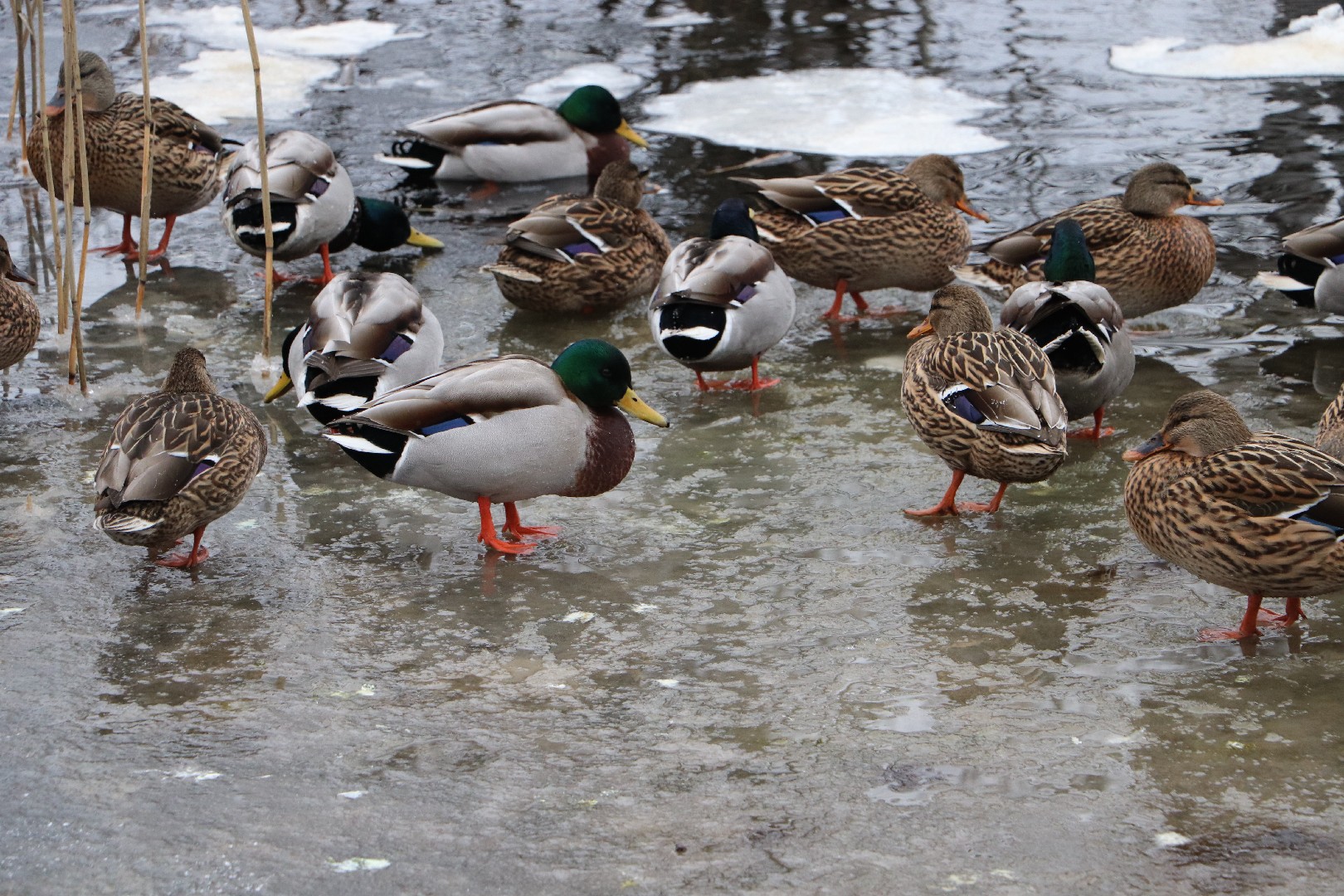Mallard
A species of Anas, Also known as Greenhead Scientific name : Anas platyrhynchos Genus : Anas
Mallard, A species of Anas
Also known as:
Greenhead
Botanical name: Anas platyrhynchos
Genus: Anas
Content
Description People often ask General Info
 Photo By Bernt Fransson , used under CC-BY-SA-4.0 /Cropped and compressed from original
Photo By Bernt Fransson , used under CC-BY-SA-4.0 /Cropped and compressed from original Description
The mallard is the most abundant duck species in the world, and the ancestor of all domestic ducks. Only the female can produce the distinctive "quack" sound. When the female lays eggs, the male abandons its mate, while the protective mother stays with the ducklings for a long time. This migratory species inhabits shallow waters and it's one of the most popular game birds.
Size
58 cm
Life Expectancy
29 years
Nest Placement
Ground
Clutch Size
1 - 13 eggs
Incubation Period
1 - 2 broods
Number of Broods
23 - 30 days
Feeding Habits
Mallard are omnivorous generalists, dabbling for seeds, aquatic vegetation, insects, earthworms, gastropods, and crustaceans. They forage on land for grains and invertebrates, favoring agricultural seed during migration, and will accept food handouts in urban environments. Their diet seasonally shifts to more animal matter during the breeding season.
Habitat
Mallard thrives in diverse wetland habitats, preferring shallow waters rich in aquatic vegetation. Their widespread adaptability covers regions from the Arctic tundra to subtropical zones. Key environments include riverbanks, lakesides, marshes, coastal areas, and urban ponds. Mallard can inhabit both freshwater and coastal saltwater areas, and readily exploits human-modified landscapes such as farmlands and urban parks.
Nest Behavior
Mallard pair on evening flights, with females building and lining nests during egg-laying. Parental care involves concealing the nest and incubation, primarily by the female.
Nest Characteristics
The nest of mallard is a shallow depression on dry ground near water, concealed by vegetation or in fields. It consists of nearby plant material and down feathers, measuring about a foot across with a 1–6 inch deep and 6–9 inch wide egg bowl.
Dite type
Omnivorous
People often ask
General Info
Feeding Habits
Bird food type
Bird Feeder Type

Platform
Sounds
Call
Recording location: Belgium
Call
Recording location: Netherlands
Call
Recording location: United States
Behavior
Mallard exhibit a variety of behaviors throughout their day, often observed foraging in water bodies by dabbling for plant food or invertebrates. These adaptable ducks are accustomed to both wild habitats and urban parks, where they sometimes become tame due to regular feedings by humans. In contrast, mallard that experience heavy hunting are much shyer. They frequently interact with similar species, often leading to hybridization. Mallard participate in complex social displays involving head-bobbing, bill-thrusting, and paired males perform acrobatic chases to protect territory. Courtship involves males performing animated movements, such as head shaking and wing flapping, while females may signal interest by nodding. Such behaviors are integral to mallard's daily life and social structure.
Distribution Area
The mallard is widely distributed across the Northern and Southern Hemispheres; in North America its range extends from southern and central Alaska to Mexico, the Hawaiian Islands, across the Palearctic, from Iceland and southern Greenland and parts of Morocco (North Africa) in the west, Scandinavia and Britain to the north, and to Siberia, Japan, and South Korea,. Also in the east, it ranges to south-eastern and south-western Australia and New Zealand in the Southern hemisphere. 
Species Status
Since 1998, the mallard has been rated as a species of least concern on the IUCN Red List of Endangered Species. Also, the population size of the mallard is very large. Unlike many waterfowl, mallards have benefited from human alterations to the world – so much so that they are now considered an invasive species in some regions. 